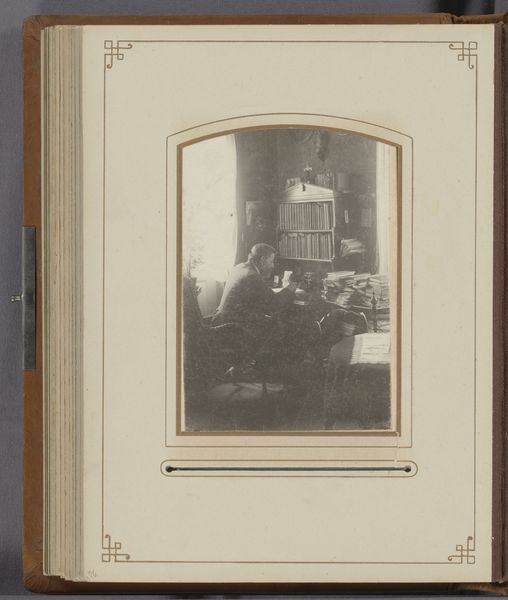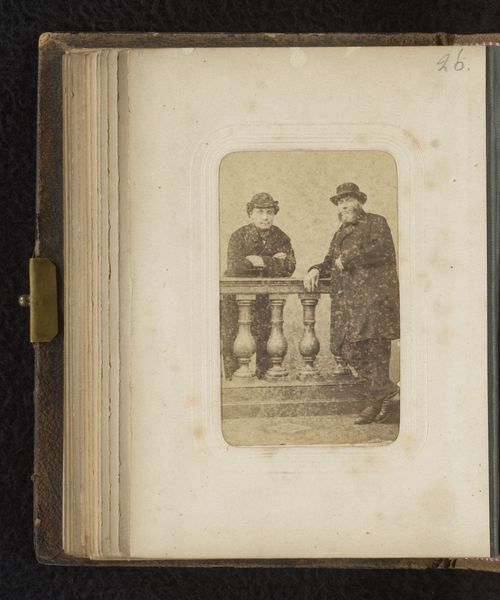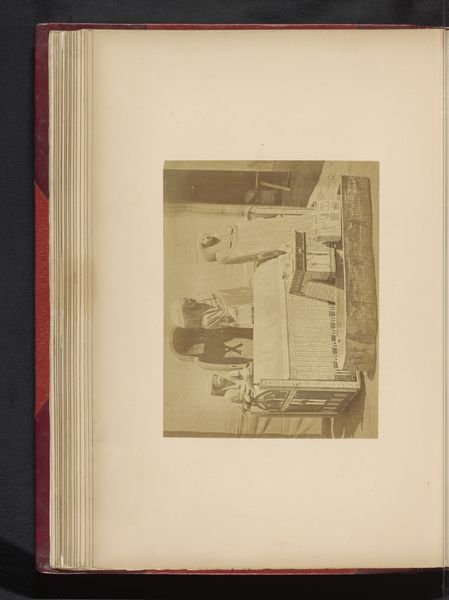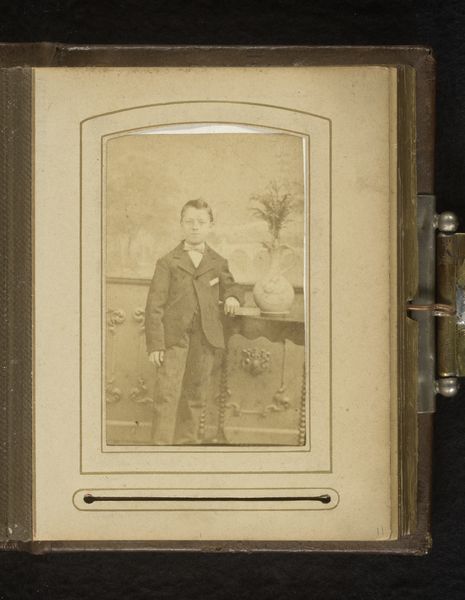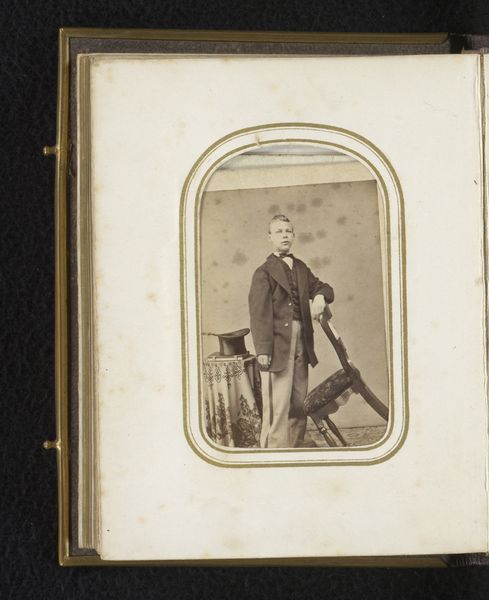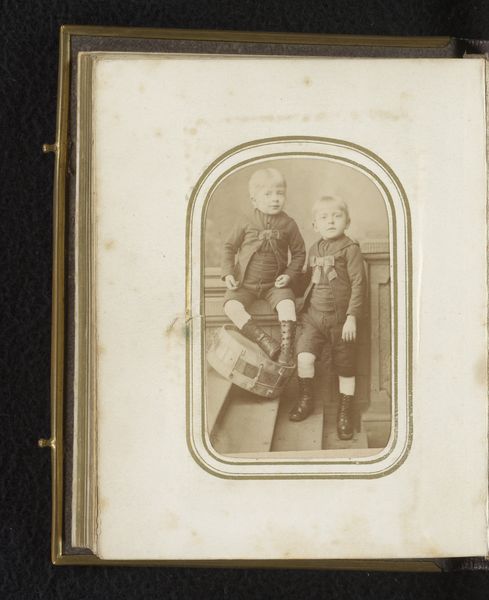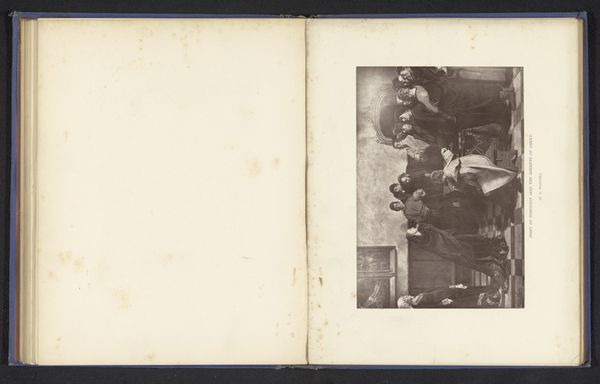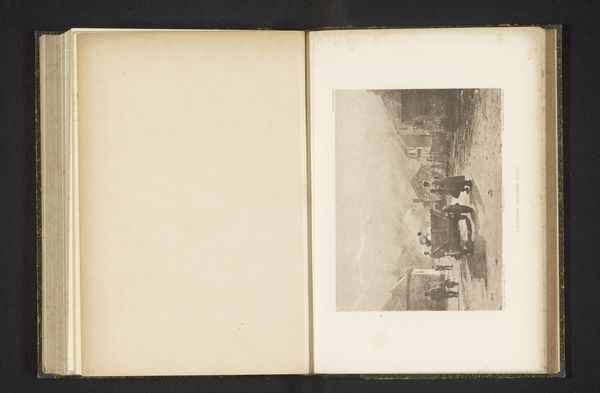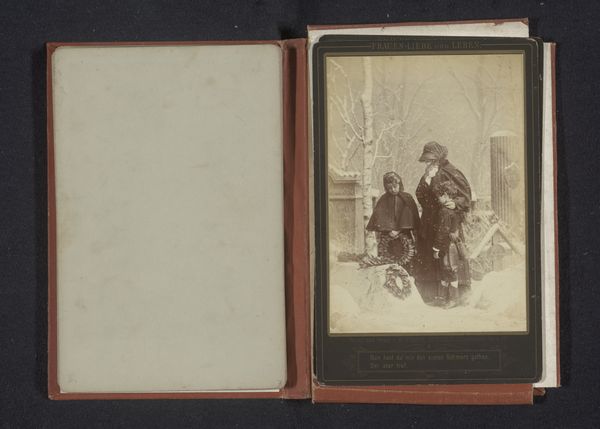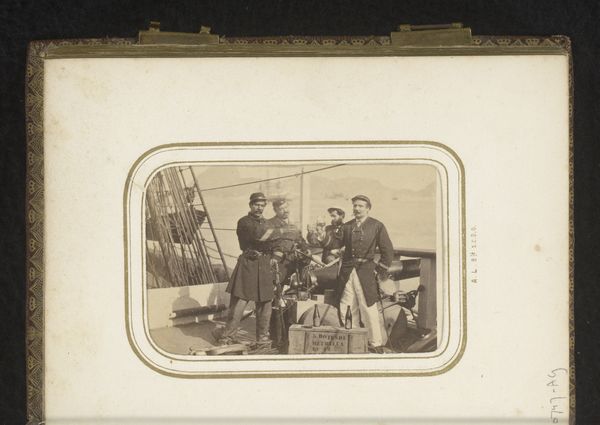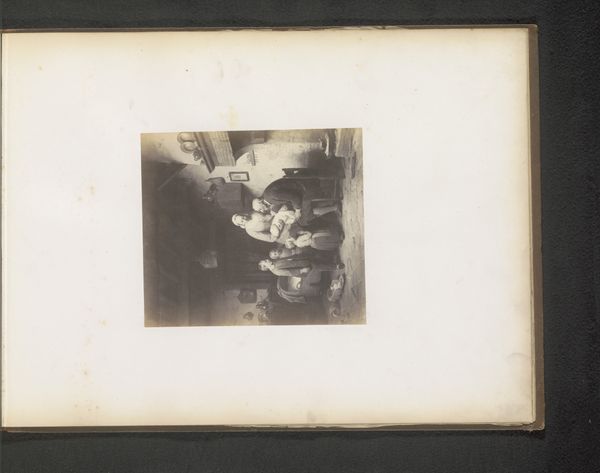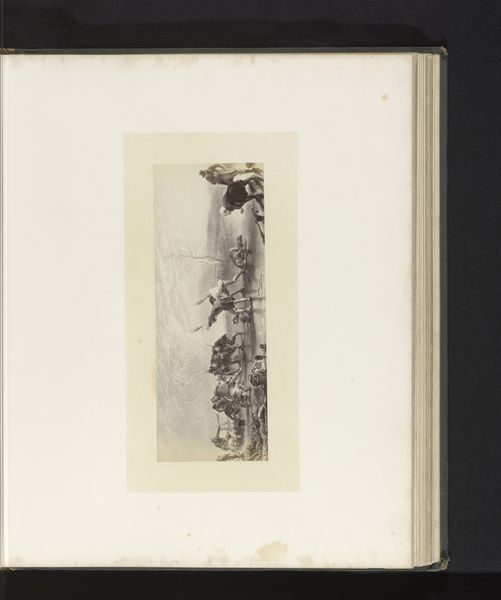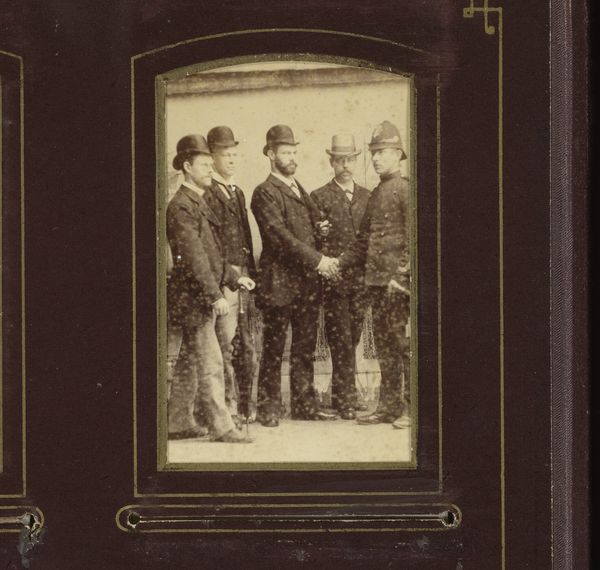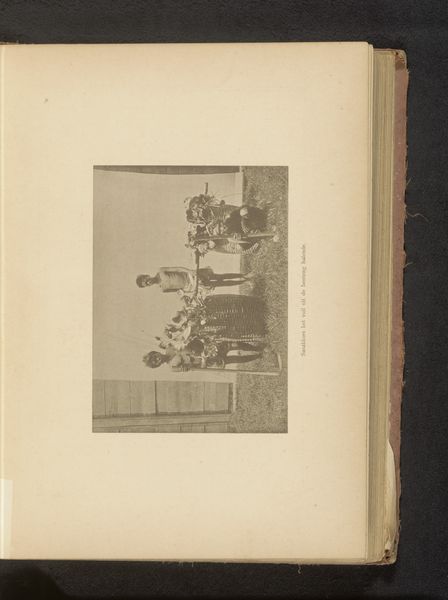
Portret van twee jongens met bolhoed, staand bij een sokkel 1865 - 1900
0:00
0:00
photography
#
photography
#
genre-painting
#
realism
Dimensions: height 83 mm, width 50 mm
Copyright: Rijks Museum: Open Domain
Curator: This albumen print, captured by Hermanus Jodocus Weesing between 1865 and 1900, offers a window into a very specific moment in time. Editor: The most striking thing is their almost unsettling seriousness, despite being children. And look at that curious, ornate pedestal. Curator: Absolutely. Consider the layers of symbolism present here. Weesing’s deliberate choices – the boys’ matching bowler hats and suits, the formal poses— speak volumes. What cultural cues do you see echoed in these figures? Editor: It's fascinating how their outfits simultaneously project conformity, given the matching suits and hats, while still permitting individual expression, note that their coats differ in buttoning style, along with minor variations in each. And their gazes are equally powerful— one boy confronts the viewer while the other is aloof. Curator: These choices likely reflect Victorian-era societal expectations. It appears they’re positioned next to the stand that signifies their family’s social aspirations. Their stern expressions suggest a pressure to embody those values— a kind of melancholic social striving, captured within the trappings of respectability. Editor: I appreciate your highlighting that duality of seriousness and societal aspiration. It adds a certain tension. Now, observe the formal composition - the careful balance between the dark attire of the children against the lighter background, emphasizing the tonal gradations achievable within the photographic medium. It's a powerful study of form. Curator: Agreed, the tones draw attention to what isn’t spoken. They almost exist in a liminal space - boyhood being something that needs performing for the sake of adult expectation. This in turn reflects how innocence becomes something performed, for society's benefit. It reflects our collective memory on a moment of transformation for boys who stand on the threshold of maturity. Editor: It is a sobering reminder, the children look like little men dressed up ready to work in industry - it speaks about a harsh, work driven society of that era. Curator: Yes, quite chilling to note the long shadows the Industrial Revolution casts across such images. Editor: And for all the realism on display, the constructed artificiality is plain. Curator: Food for thought. Editor: Indeed, it is.
Comments
No comments
Be the first to comment and join the conversation on the ultimate creative platform.
